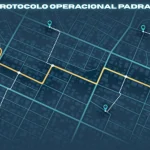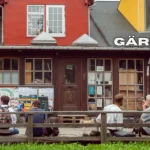The spaces we move through every day carry weight, and this is mostly because of how they make people feel. Civic environments are more than just buildings. They represent trust and the relationship between citizens and their communities.
But, there’s a catch. The way these places communicate through their signs and overall flow can either invite people in or quietly push them away.
Accessibility and respect go hand in hand in these settings. When people feel lost or confused in a public space, it chips away at their trust. A well-designed civic environment connects and makes sure that everyone feels considered.
The Unseen Power of Clarity
People usually think of ramps and elevators when we talk about accessibility. Hence, cognitive access is often overlooked. It guides people easily through a space without forcing them to overthink, so letting it go out the window is a serious mistake in civic spaces.
Imagine walking, tense, into a government office for the first time. The last thing you’d want is to be hit with outdated signs and confusing pathways. Instead of feeling helped, you feel like an outsider trying to navigate a maze. This is where good design steps in.
Custom government signage plays a quiet but powerful role here. Tailored signs that are clear, straightforward, and strategically placed reduce cognitive load. They help people focus on why they came to the space rather than how to move through it. The best signage anticipates questions before they’re asked.
Emotions in Public Spaces
Civic environments hold emotional weight. People don’t just come to these places for transactions. They come with hopes, worries, and expectations. A courthouse, for instance, might be where someone finalizes an adoption or resolves a dispute. The design of that space can amplify stress or help ease it.
Psychological safety starts with small cues:
- The height and tone of signage (neutral language, simple wording)
- Lighting that feels warm but functional
- Spaces that offer quiet zones for reflection or decompression
Where Design Meets Empathy
Empathy in civic design doesn’t have to be loud. It often shows up in subtle details, like the font size on a sign. Even the placement of seating in waiting areas speaks volumes.
When we consider these factors, we’re respecting the people who use it on top of being functional.
Here’s where design teams sometimes get stuck: they rely on standards. Standards are helpful, but they’re only a starting point. Accessibility codes ensure compliance, not connection. To build spaces that feel respectful, designers need to go beyond the checklist.
A checklist doesn’t know what it’s like for a parent with two kids in tow, navigating a crowded building. Or for someone with anxiety who needs clear, predictable directions. That’s where human insight fills the gaps.
Tips for Designing Respectful Civic Spaces
Creating better experiences doesn’t always mean massive overhauls. Sometimes, small tweaks make the biggest difference:
- Use plain language. Replace legal jargon with everyday words.
- Think about height. Make sure signs and directories are visible to people of all heights, including wheelchair users.
- Offer choice. Waiting areas with various seating options (hard chairs, soft chairs, benches) allow people to find comfort on their own terms.
- Include visual and tactile cues. Braille and raised lettering on signs, along with color contrast, help more people navigate independently.
Designers who focus on these details help build trust. Trust isn’t won by telling people they’re welcome. It’s shown through the experience they have in space.







